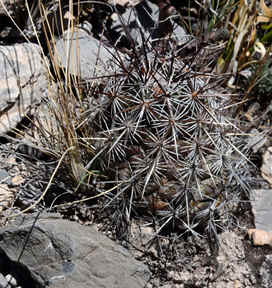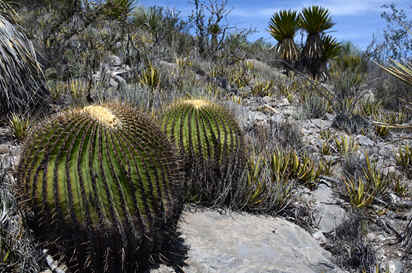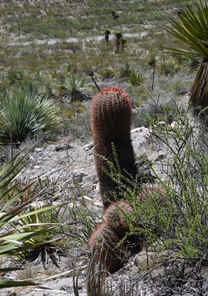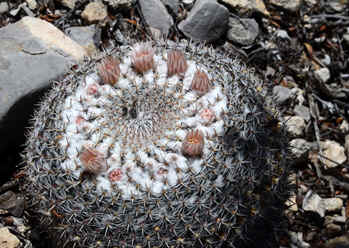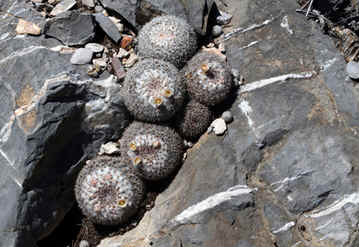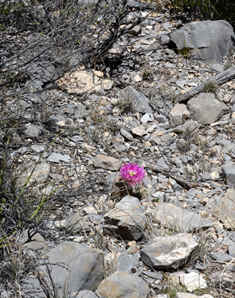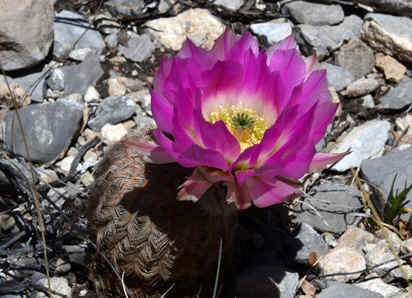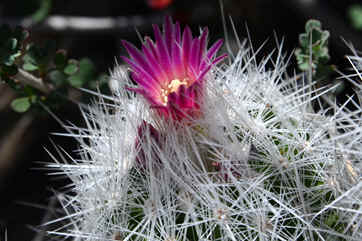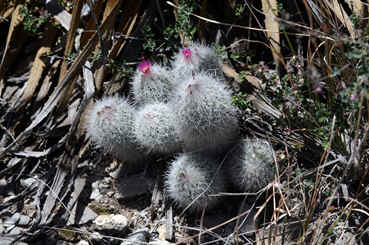I was lucky enough to visit Mexico in Spring
2014 with three similar minded enthusiasts to search for cacti. One
hillside in Coahuila was perhaps typical of our stops with an interesting
mix of species. After a dusty drive along a reasonable dirt road (and some
were certainly the opposite), we parked and collected our gear. For me
this was GPS, sunhat, water, cameras and tripod.
The first plant we encountered was Neolloydia
conoidea,
a very common cactus of this area and present at just about every location
we visited in some form or other. They generally cluster with age.
Sometimes the species had attractive white spines or was in flower with
small magenta flowers but these were the form we usually encountered and
not in flower.
